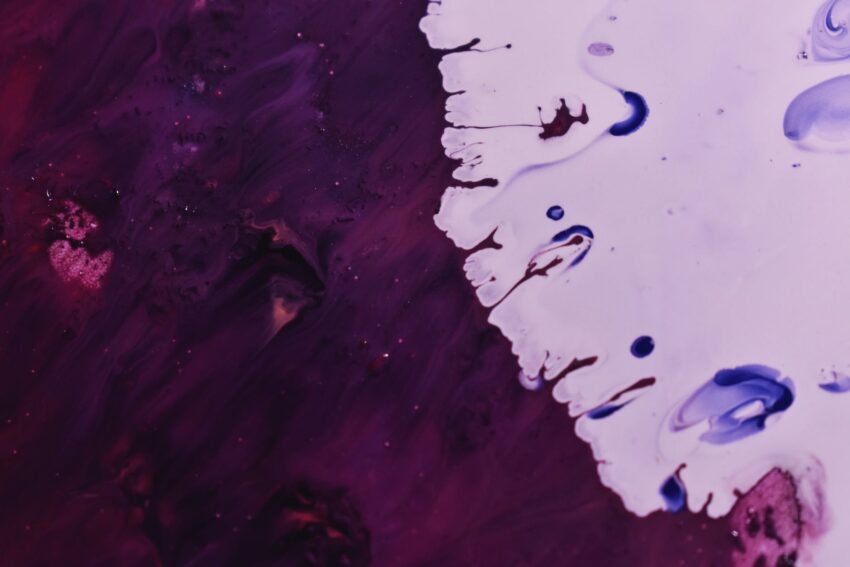The late 1960s were not only characteristic of intense political and social changes but also bore witness to the genesis of a novel artistic norm: psychedelic artwork. This seismic shift in the artistic landscape was a reflection of the era’s radical cultural changes and is still deeply influential today.
Psychedelic art is principally a visual representation of the hallucinogenic experience induced by psychedelic substances. It manifests itself in a range of media, including but not limited to painting, digital art, music, and film. Outlined by wildly vivid colors, morphing geometric patterns and complex fractals, and imagery steered by spiritual, mystical, and metaphysical themes, psychedelic aesthetics offer an exploration into the inner workings of the subconscious mind and the greater universal mysteries around us.
The birth of this distinct art form aligns with the western world’s renewed interest in mind-altering substances and the consequent counterculture that emerged. As psychedelic culture grew, so did the lust for art that could depict the unique mental voyage these substances promised. This led to the thriving marriage of art and psychedelics significantly influencing music festivals, art galleries, and even fashion.
An essential characteristic of psychedelic artwork is that it endeavours to replicate the peculiar sensory experiences or “trippy visuals” one may encounter during a psychedelic journey. Sharp contrasts, intense colours, intricate spiral patterns, and distortions of reality are all markers of this unique artistic style. The idea is to challenge the viewer’s perception, leading them on a sensory escapade similar to the one induced by substances such as LSD or psilocybin.
Key figures like the British visionary artist Alex Grey or the American cartoonist and psychedelic artist Robert Crumb have both uniquely shaped the realm of psychedelic art. Grey’s work, largely recognized for its intricate detailing and spiritual elements, perfectly illustrates the exploration of human consciousness, while Crumb’s humorous and exaggerated comic strips served as a searing critique of American culture and politics.
Publications such as the Oz magazine (UK) and the San Francisco Oracle (US) are known for prominently featuring psychedelic art, making it accessible to a wider audience. The use of such eye-catching visuals bolstered their appeal, causing a surge in countercultural trends and ideologies. Psychedelic artwork also profoundly impacted prominent music acts, with bands like The Grateful Dead and Jefferson Airplane using psychedelic aesthetics in their album covers and posters.
Fast forward to the present day, psychedelic art has evolved yet still holds true to its roots. Digital art has brought about a resurgence in this style, with contemporary artists finding novel ways to bring these trippy visuals to life. Modern psychedelic artists are using this platform to express their evolving worldview, marking a sharp departure from the simplistic, fantastical themes of the past.
As global conversations around mental health and consciousness continue to evolve, art continues to play a pivotal role in this dialogue. Psychedelic art, in particular, invites us into the realm of the subconscious, serving both therapeutic and exploratory purposes. This powerful sharing and visualization of human experience in its most raw form have invariably increased the appreciation for and acceptance of this creative genre.
Moreover, academic studies are now looking into the healing properties of psychedelics and their potential as therapeutic tools. This renewed interest in their benefits may well guide new waves of art and culture, further underlining the intertwined relationship between society and the art that it produces.
In conclusion, psychedelic art is not just a collection of vibrant, trippy visuals meant for aesthetic pleasure. It is a poignant expression of the human experience and our continued quest for self-understanding and interconnectedness. Inspiring artists, dreamers, visionaries, and disruptors, it is a testament to art’s transformative power.
It is safe to say that psychedelic art, born out of the need to express the ineffable, has far exceeded its original countercultural confines of the 1960s. From influencing fashion trends to inspiring digital design, it has seeped into every crevice of our cultural fabric. The captivating allure of psychedelic aesthetics transcends boundaries, making it a globally influential art form that continues to shape our perception of the world and ourselves within it.
